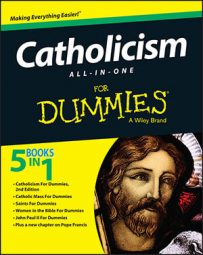Matthew, originally known as Levi, may have been the last person Jesus's followers would have chosen as an Apostle. He was a tax collector, a profession loathed as being traitorous and collaborating with the occupying Romans. So despised were these "civil servants" of the Roman Empire that Jews were forbidden to marry or even associate with them.
Because of Matthew's profession, there was something of a scandal when Jesus approached him. Yet, as Jesus himself often said, he came not for the healthy but for the sick, to seek the lost that they may be found. While not physically ill, Matthew was spiritually in need of healing. The invitation to become a follower of Christ was too great to resist, so he became a disciple when asked.
Author of the first Gospel in the New Testament, Matthew wrote for a predominantly Hebrew audience — that is, to Jews who were curious about or interested in Jesus but didn't know the story. This is seen in his meticulous attention to biblical references in the Old Testament prophesying the Messiah. His genealogy of Christ in the first chapter begins with Abraham and ends with Joseph, the husband of Mary. (Although Jesus wasn't the biological son of Joseph, he was the adopted and legal heir in Mosaic law, so Jesus was properly known as the "son" of Joseph.)
Matthew also accentuates the connection between Jesus and Moses, the hero of the Old Testament, particularly through his comparison of Jesus's Sermon on the Mount (Matthew 5:1) to Moses receiving the Ten Commandments from God (Exodus 19).
How St. Matthew was martyred isn't known according to the Catholic Church. His symbol is the figure of a man with wings, because he begins his Gospel with the genealogy of Jesus that shows the humanity of the Lord united to his divinity in one divine person.
Galilee (first century a.d.)
Patron: tax collectors, accountants, bookkeepers
Feast day: September 21

